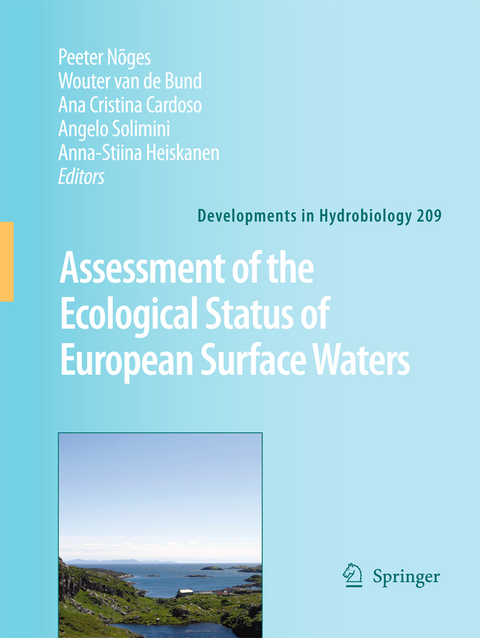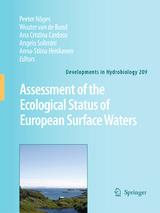Assessment of the ecological status of European surface waters
Seiten
This book discusses the basic principles of setting up biological assessment methods. It covers a large variety of biological indicators from chlorophyll to macroinvertebrates.
The complex impact that man has on aquatic ecosystems creates a need for assessment systems that are able to adequately appraise and integrate the effects of various pressures. Chemical analysis alone can easily overlook some factors vital for life. With the adoption of the EU Water Framework Directive (WFD) in the year 2000 which defined the ecological status of surface water as ‘‘… an expression of the quality of the structure and functioning of aquatic ecosystems associated with surface waters", biological indicators were brought to the forefront for the first time and became drivers to the water management practices.
Assessment of ecological status and quantification of its relationships with anthropogenic pressures critically depend on knowledge of relevant biotic and abiotic settings and processes. Needs raised by the implementation of WFD have urged scientific research in many fields in order to find more stable and robust biological metrics and to diminish the uncertainty of assessment results. The number of WFD related scientific publications has increased linearly and exceeded 1500 in the year 2008. This book comprises a small set of this large flow of publications and is mainly focused on the development of biological assessment methods and intercalibration of the assessment results.
The complex impact that man has on aquatic ecosystems creates a need for assessment systems that are able to adequately appraise and integrate the effects of various pressures. Chemical analysis alone can easily overlook some factors vital for life. With the adoption of the EU Water Framework Directive (WFD) in the year 2000 which defined the ecological status of surface water as ‘‘… an expression of the quality of the structure and functioning of aquatic ecosystems associated with surface waters", biological indicators were brought to the forefront for the first time and became drivers to the water management practices.
Assessment of ecological status and quantification of its relationships with anthropogenic pressures critically depend on knowledge of relevant biotic and abiotic settings and processes. Needs raised by the implementation of WFD have urged scientific research in many fields in order to find more stable and robust biological metrics and to diminish the uncertainty of assessment results. The number of WFD related scientific publications has increased linearly and exceeded 1500 in the year 2008. This book comprises a small set of this large flow of publications and is mainly focused on the development of biological assessment methods and intercalibration of the assessment results.
| Erscheint lt. Verlag | 4.2.2010 |
|---|---|
| Reihe/Serie | Developments in Hydrobiology ; 209 |
| Zusatzinfo | VI, 212 p. |
| Verlagsort | Dordrecht |
| Sprache | englisch |
| Maße | 193 x 260 mm |
| Themenwelt | Naturwissenschaften ► Biologie ► Ökologie / Naturschutz |
| Naturwissenschaften ► Geowissenschaften ► Hydrologie / Ozeanografie | |
| ISBN-10 | 90-481-8577-7 / 9048185777 |
| ISBN-13 | 978-90-481-8577-1 / 9789048185771 |
| Zustand | Neuware |
| Haben Sie eine Frage zum Produkt? |
Mehr entdecken
aus dem Bereich
aus dem Bereich




